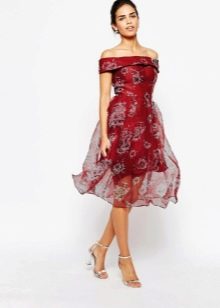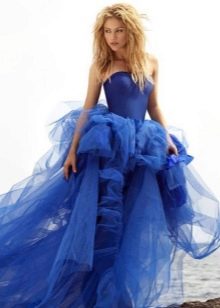Organza dresses - lightness and airiness
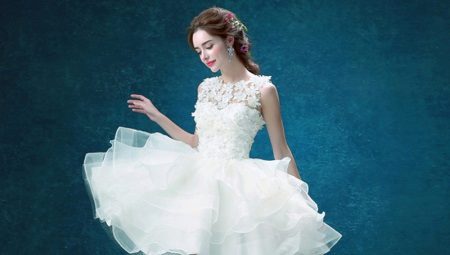
A delicate, airy dress with a fluffy skirt is a real princess outfit that every girl should try on at least once in her life. In order for the dress to look like a weightless cloud, a special fabric is needed. Most often, organza is chosen for sewing such outfits - a beautiful, flying material that can turn any young lady into a fabulous creature.
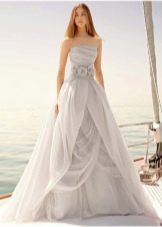



Organza is the thinnest, almost completely transparent fabric woven from several types of fibers. The name of the material, like himself, has an oriental origin - organza appeared in European countries only at the end of the 18th century.
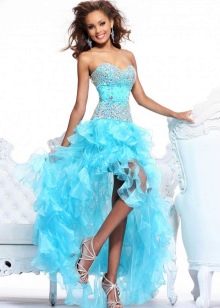

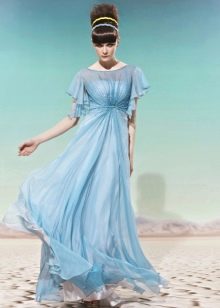
In today's article we will talk about the features of organza dresses: about their characteristics, popular styles and models, as well as how to properly care for products made from this material.

Pros and cons of organza
Like any other fabric, organza has its own advantages and disadvantages.
The advantages of this material include:
- the ability to maintain shape for a long time;
- high degree of strength;
- spectacular appearance;
- pleasant tactile sensations;
- light weight, due to which even fluffy and long dresses remain very light;
- the material is quick-drying;
- low cost;
- good breathability;
- the fabric wrinkles poorly and is easy to iron;
- the ability to easily remove most types of dirt from the fabric.
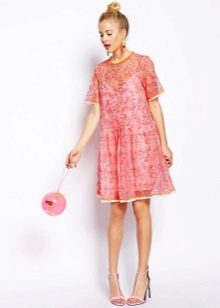






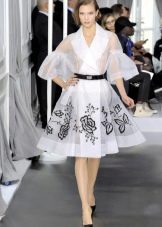
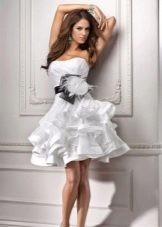
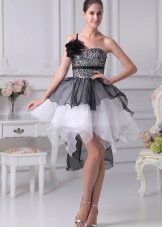


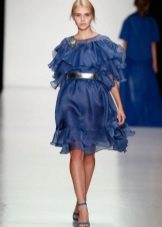
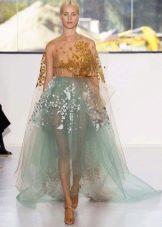
Organza has significantly fewer drawbacks than positive qualities. The following features of this material must be taken into account:
- you should iron the organza very carefully, as it is easy to burn it with an iron;
- it does not drape very well - the organza gathers only in large folds;
- the high degree of transparency of the material makes the use of lining fabric mandatory.
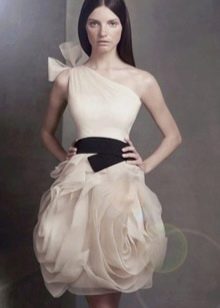
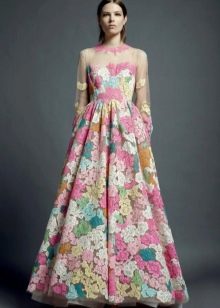
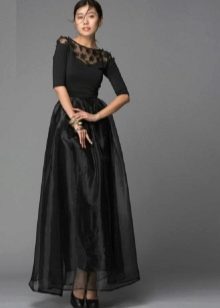
Composition
Organza has a rather complex composition, as it is made from several types of fibers. Traditionally, such a fabric is made from silk, rayon or polyester fibers. Thus, organza is not always a natural material, it can be synthetic or have a mixed composition.
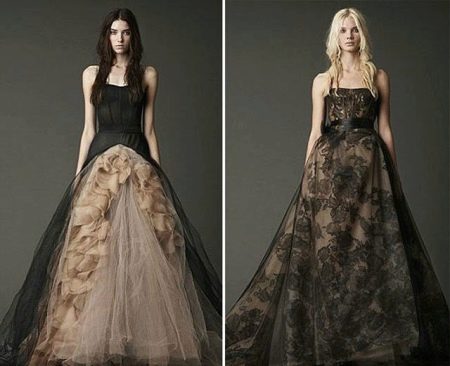
The addition of artificial fibers allows for an unusual texture and appearance of the fabric. Organza can have a glossy or matte surface, be monochromatic or multi-colored (iridescent in several colors). Perforated organza and organza woven with shiny threads are very popular.

Styles and models
Organza is the most suitable material for sewing elegant, lush dresses. It perfectly holds the volume, therefore, the skirt will be very wide in any case, no matter what length of the outfit you choose. Organza dresses are not an option for everyday life, therefore, in fashion magazines and in stores, there are mainly evening and cocktail options for dresses made from this fabric.
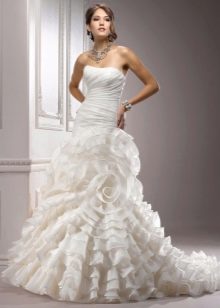
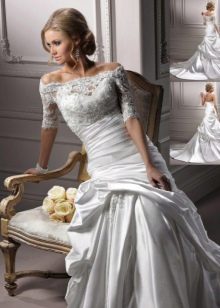
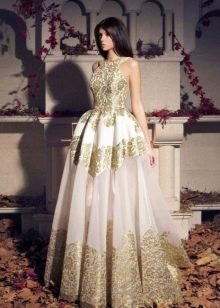
The classic model of a dress made of organza is a dress with an A-shaped silhouette (also called a silhouette dress). It is an outfit with a form-fitting top and a flared floor-length skirt. Bandeau dresses with a rigid, open bodice and an organza skirt look spectacular. In the evening version, the skirt should be maxi, and for less formal occasions, cropped models are acceptable.
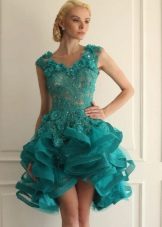
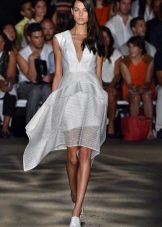


Puffy dresses
An organza dress with a full floor-length skirt is a traditional solution for a prom. Such a dress can be classified as ballroom, as it meets all the criteria. Despite the style, which has already become a classic, such dresses can be very diverse.
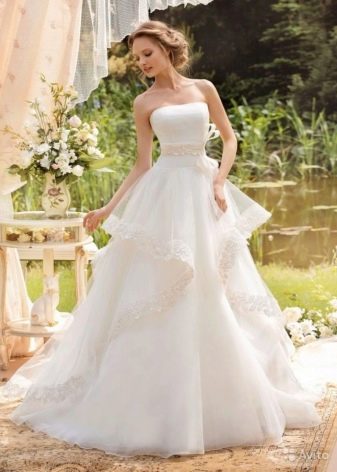
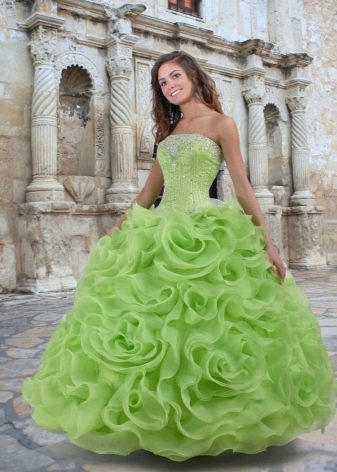
A fluffy organza dress with layered skirts of different lengths looks spectacular. Layers can differ in color: both contrasting combinations and smooth gradient transitions from one color to another look very unusual.
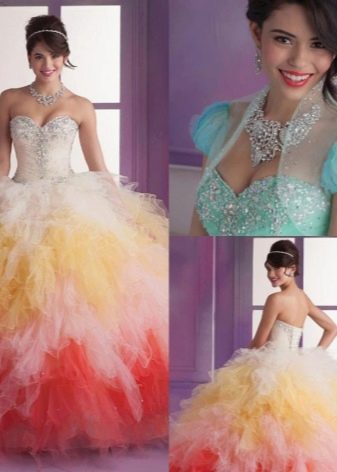
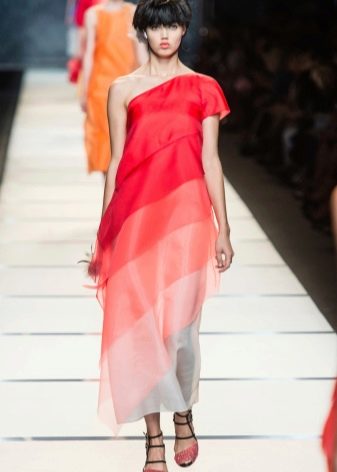
The upper part of the dress can also be made in different modifications. Usually, accompanied by a long, magnificent skirt, the most open bodice is chosen, beautifully emphasizing the line of the shoulders and the shape of the chest. The sleeves of such a dress are usually either missing or made of a different material. The lack of sleeves is often compensated for with long gloves.
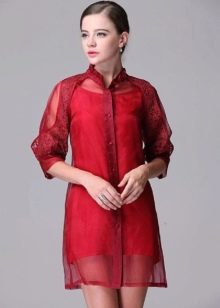

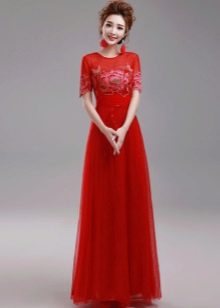
Organza wedding dresses
For the most important day of their lives, many brides choose organza dresses. This is due to many factors, including the availability of the material, as well as a wide variety of colors and textures. Today, more and more girls are abandoning the standard boiled white wedding dress in favor of beige, ivory, ivory or even brighter color schemes.
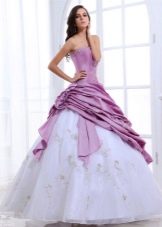

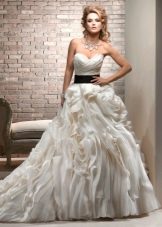
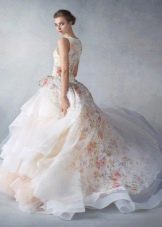
With the help of organza, designers create incredible, airy skirts. Such an outfit turns the bride into a truly beautiful, unearthly creature. The translucent material allows you to play with color and light, if you use several types of fabric when sewing a wedding dress.
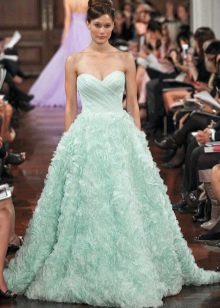
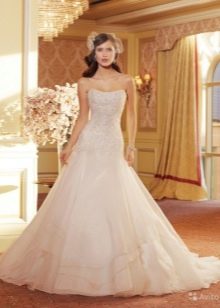

Evening and cocktail options
Organza dresses for fun parties and special occasions will be completely different.
For a formal exit, you should prefer an outfit with a long, not too fluffy skirt. Such a dress should be a discreet color, for example, silver gray, black, navy blue or burgundy. In this case, not multi-layered, voluminous skirts will be more appropriate, but a dress with a slightly flared silhouette, with a cover made of dense material and a flowing organza upper skirt.
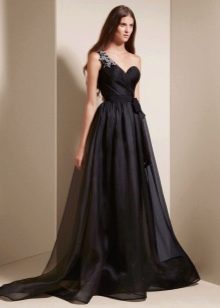

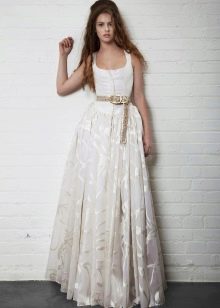
The requirements for cocktail dresses are not at all so strict, since this is an outfit for dancing and socializing in an informal setting. For such cases, they usually choose short dresses with a fluffy skirt, for example, a tutu dress. The bodice is usually quite open.The color of the outfit can be any; delicate lilac, lemon, emerald and turquoise organza models look equally impressive.

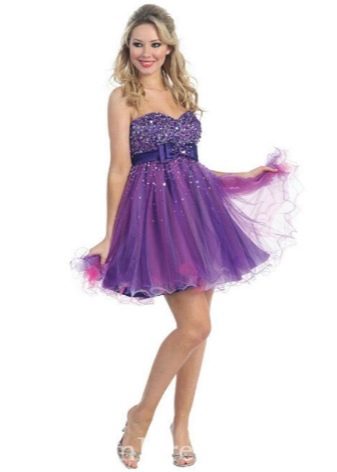

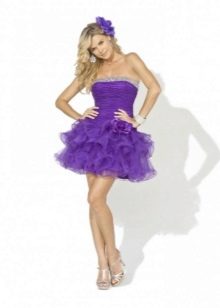
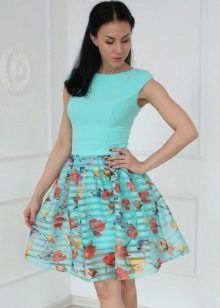
Care features
- It is recommended to use special detergents for delicate fabrics for washing organza dresses.
- Soaking such a dress is allowed, but only in warm water and for a short time.
- Organza dress should be washed either by hand or in the washing machine with a delicate wash cycle.
- The water temperature during washing should not be higher than 40 degrees.
- You need to dry an organza outfit in an upright position, away from heating appliances.
